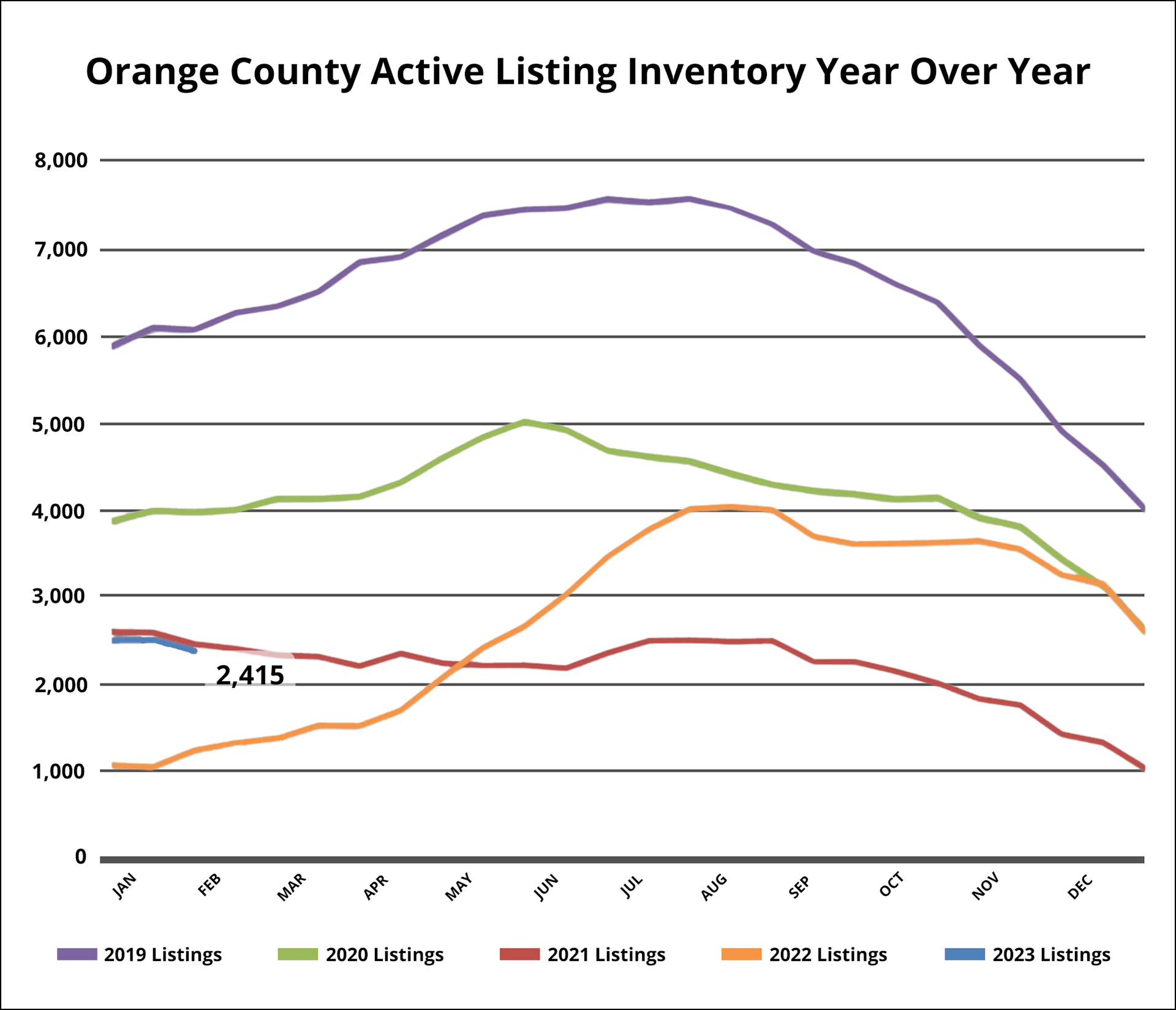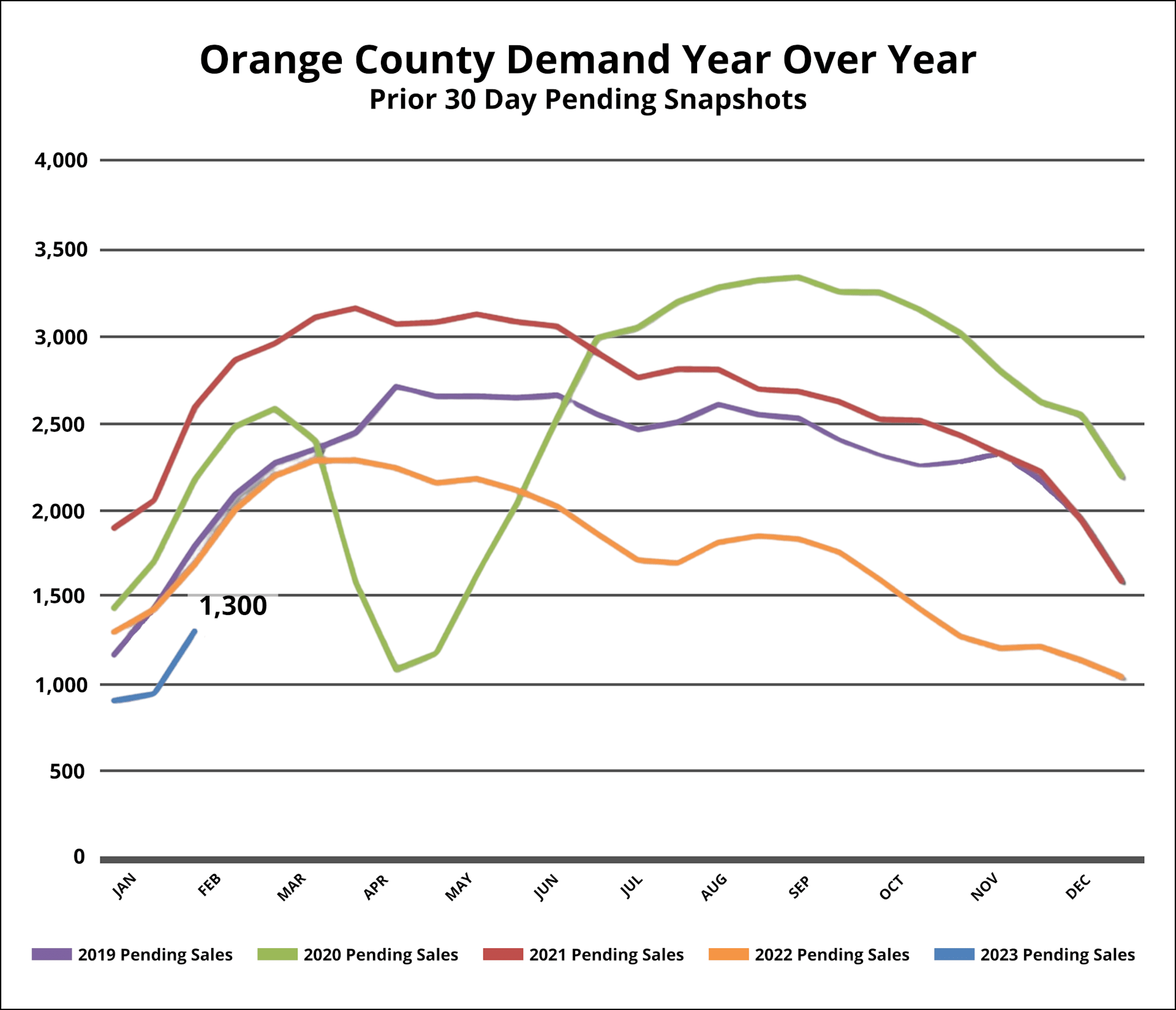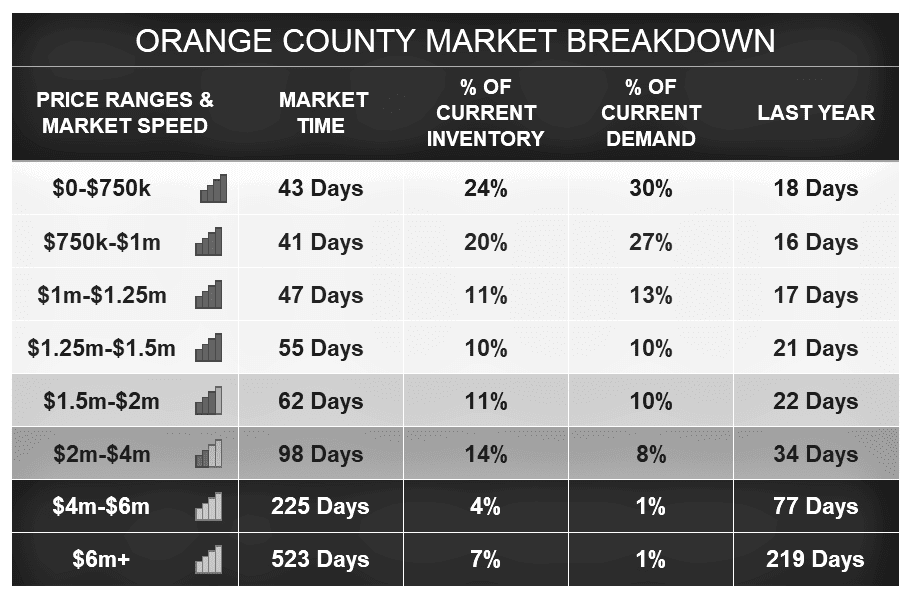Housing Starting to Flex
After a very sluggish finish to 2022, buyers are starting to return to the home market, demand has already increased significantly, and market times are decreasing quickly.
Buyer Demand Coming Back
As housing recovers from historically low levels, pending sales are rocketing upward.
There are times when it looks like very few people will turn up, such as when you arrive early to a movie theater, sit in the seats of an unoccupied church with a lot of time before the service starts, or get seated right away at a famous restaurant before the busy hours. Then all of a sudden, the cinema is jam-packed, the church seats are full, and your favorite restaurant has an hour-long waitlist. In the housing industry, that is exactly what is happening right now. A month ago, there was minimal real estate activity since everyone's minds were still clouded by the Christmas season. There were no visitors to open houses and few showings. Buyers have suddenly started to purchase again, demand has skyrocketed, and market times have decreased.
The present trend is one of steadily rising demand versus a shortage of properties for sale. The market times are decreasing as a result. The Expected Market Time, or the period of time between going on the market and switching to pending status, fell from 81 to 56 days over the previous two weeks alone, losing 25 days, and reaching its lowest point since September of last year. The difference is obvious to purchasers who are really in the market. Homes are moving a lot faster all of a sudden. When a house is priced fairly based on its Fair Market Value, taking into account location, condition, improvements, features, and age, it attracts a lot of initial interest and sells quickly. Buyers are losing a bit of the momentum they had built up over the previous six months as market times decline. It does not imply, however, that purchasers will go above and above the asking price. The housing market has not yet returned to its peak during the pandemic from 2020 until the first half of 2022. It does imply that the impact on declining property values will be lessened by the increasing competition.
Supply and Demand
In the recent weeks, there was a fall of 121 properties in the active listing inventory, which resulted in a decrease of 5%. The current inventory of homes is 2,415. A declining inventory at the beginning of the year brings to mind 2021, when COVID was still exerting a significant amount of influence over the housing market. During the Winter Market, which runs from January until about the middle of March, the supply of goods typically gradually increases. However, this year was an exception. The current level is pitifully low, and it will be impossible for it to rise until a greater number of homeowners make the decision to sell their homes. Homeowners chose to remain in their residences because of the "golden handcuffs" presented by historically low fixed mortgage rates. Surprisingly, 89% of all homeowners who have a loan have a mortgage rate that is 5% or lower, and 71% of them have a rate that is 4% or below. Until the difference between current rates and their underlying fixed rates is closed, there won't be many sellers until mortgage rates go to the mid-5s or below. The best time for families to put their houses on the market so that they can sell during the summer months when the kids are out of school is during the spring market, which runs from mid-March to mid-June. Expect to see more homeowners list their properties during this period.
In comparison to the previous year, there were 1,270 fewer items in stock, which is a decrease of 47%.
Demand, which is a snapshot of the number of new escrows over the course of the previous month, grew from 939 to 1,300 in the past couple of weeks, adding 361 pending sales, which is an increase of 38%. Since February of 2021, this was the most significant increase in demand. The market for mortgage rates in 2022, which saw consistent increases throughout the year, is now in the past. Since December, interest rates have fluctuated between 6% and 6.5%, creating a more stable environment and encouraging many buyers who had put off their search for a property to restart their hunt. It would appear that the days of interest rates of 7% or higher are a thing of the past at this time, as the pattern of progressively dropping inflation continues. The pattern of progressively declining inflation makes it seem as though the days of interest rates above 7% are now a distant memory. Expect the demand to increase quickly over the entire month of February. It will result in more demand if mortgage rates decline over time to below 6%.
The demand was 1,683 units a year ago, which is 29% more than it is today, or an additional 383. In the three years prior to the implementation of COVID (2017-2019), the average number of pending sales was 2,083, which is 60% more than the current number or an extra 783.
Luxury End
There has been a noticeable improvement across the luxury market for the past few weeks.
The Expected Market Time for properties with prices ranging from $2 million to $4 million has reduced from 116 days to 98 days over the course of the last few weeks. For houses valued between $4 million and $6 million, it fell from 245 days to 225 days over this time period. The Expected Market Time dropped from 882 to 523 days for properties priced higher than $6 million. If a seller waits 523 days, they will likely have to consider putting their house up for sale in escrow sometime around July 2024.







